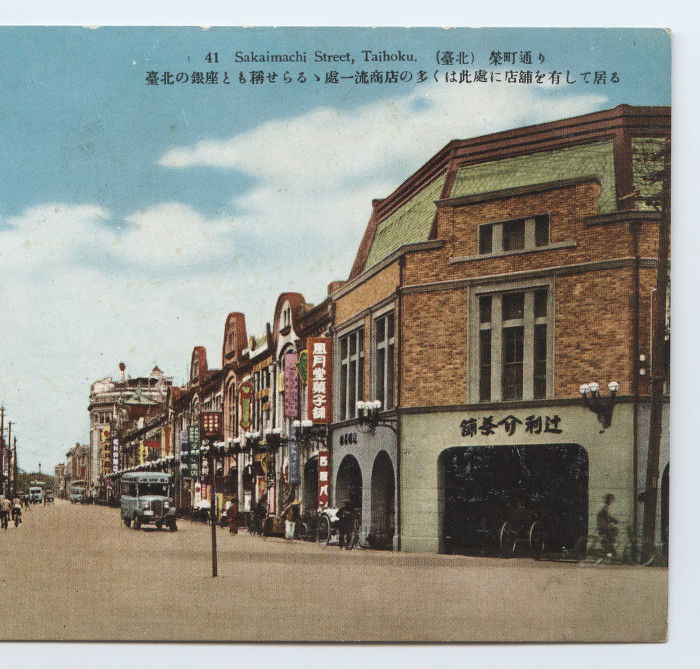Tattooing by Aborigines: Taipei's Ginza
Tattooing by Aborigines: Taipei's Ginza
[Run both postcard photos; the urls are listed here. They’re from the East Asia Image Collection of Lafayette College. The material on the pages describing the photos suggests that permission for our use probably will be easy to obtain. The collection was recommended by Louise Young, Japanese historian at the University of Wisconsin.]Tattoo (photo 4):

Taipei street (photo 18):

Context.
Picture postcards of colonial life, which were highly popular in Japan in the 1920s and after, told as much about Japanese attitudes as they did about life in Taiwan, which became Japan’s first colony when it was taken from China in 1895 at the end of the Sino-Japanese War. Although many Taiwanese resisted the takeover and the colony at first proved immensely costly, the Japanese saw it as a success story by the 1910s because of the growth of its economy and the development of a strong infrastructure and agricultural sphere under the leadership of civilian governor Gotō Shinpei, one of Japan’s ablest colonial administrators. Two images dominated these postcards: the “primitive” nature of traditional Taiwanese society, as shown in this Mori Ushinosuke photo of a rural woman giving a villager a tattoo, and the growth of the urban economy, demonstrated by this 1918 photo of Sakaimachi Street in the capital city of Taipei. The street is described as “Taipei’s Ginza,” full of “first class shops.”
Questions.
1. List the features of the tattoo-artist photo that might have convinced a Japanese that Taiwan was “backward.” Ask yourself what those features connote to you: backwardness, beauty, enlightenment, or something else?
2. List the features of Sakaimachi Street that connote modernity and development. What might that have suggested to a Japanese consumer about Japan’s role as a colonial power?
3. How do you think Taiwanese would have felt about these photos as conveyors of information about their country?
Terms.
Aborigines. The card uses the term banjin, which Japanese typically applied to Taiwan’s mountain peoples; it can be translated “aborigine” or “savage.” The photographer wrote that the Atayal people (pictured here) “have the custom of tattooing to mark the passage to maturity.” The tattoo items, needles and soot, rest beside the woman who is doing the work.
Ginza. Ginza was Tokyo’s most expensive shopping area, known for high class shops and the latest in fashion and material goods.
Source: Michael Lewis Taiwan Postcard Collection, East Asia Image Collection, Skillman Library, Lafayette College.
Printable PDF

